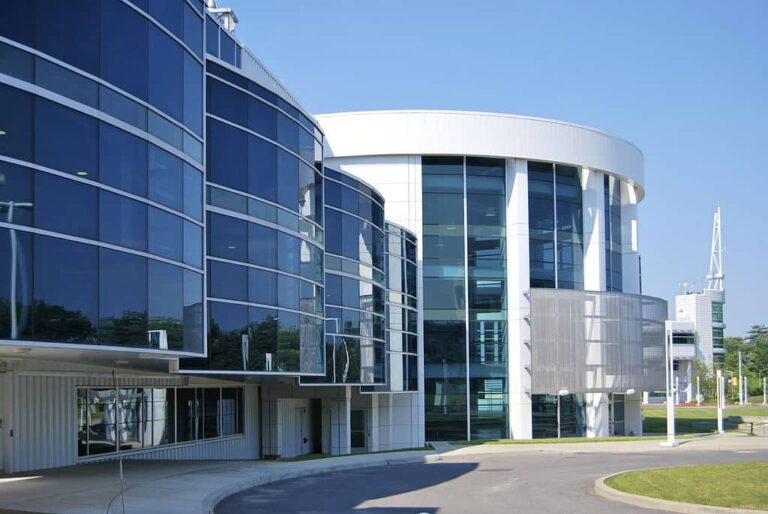At summer’s dog days I travel to Cobalt in Northern Ontario. Created overnight by the discovery of rich silver deposits in 1903, the town set off a mining boom; between 1905 and 1914 alone more people than Canada’s entire population at the time traveled there by train. The area became fabulously rich, but when the silver ore dwindled it all ended as quickly as it started. Today Cobalt has barely 1,100 inhabitants, one grocery store, one pub, one diner, and no train station. At the same time, Cobalt’s mining boom helped to transform another Ontario town, some 300 miles to the south, into a bustling, modern metropolis. The silver rush needed clever financing, a stock market, and a trading center; thus Toronto’s still-thriving financial center was born.
The story of Cobalt exemplifies a familiar pattern of local economic boom and bust, one only worsened by the rise of our current version of globalization at the end of the twentieth century. Since the 1970s, local communities across the world, and in the United States in particular, have struggled to achieve innovation-based, inclusive prosperity. One-time innovation hubs—Cleveland in the United States and Lyon in France—have fallen into a vicious cycle of decline. Worse, our celebrated success stories, such as Silicon Valley in the early days of Apple, have proved fleeting as good local jobs for people with all skill levels give way to inequality, gentrification, and poverty. Now, in the wake COVID-19, the question of how to achieve local economic growth has taken on even greater urgency.
Many failed efforts at local growth have foundered on myths about innovation. First is the belief that cities can become the “next Silicon Valley” with the right combination of high-tech ideas and venture capital. Those who profit by selling the Silicon Valley dream to local policymakers around the world either do not know, or do not mention, that high-tech start-ups backed by venture capital (VC), and aiming at financial exit, now tend to widen rather than close the gulf between rich and poor. A city can waste a lot of resources trying to improve its economic health by courting and investing in tech companies only to find that they made their founders and funders rich but left everyone else worse off. In today’s world of globally fragmented production and dominating high-tech clusters, these efforts don’t raise all boats.
There is perhaps no better cautionary tale about the flaws of this overhyped innovation model than Israel’s experience with venture capital. In 1968 the country’s industrial sector had a paltry number of R&D workers—just shy of 900—while academic education and business-sector R&D investment stood at 1 percent of GDP, the lowest of OECD countries at the time. Between 1978 and 1986, Israel suffered a severe economic crisis, with inflation raging at more than 100,000 percent. By the end of the 1990s, however, the state had nourished a new high-tech sector. Led since the mid-1970s by an innovation agency formerly known as the Office of the Chief Scientist and now as the Israeli Innovation Authority, this effort worked to deeply embed the new tech industry within U.S. markets, specifically following the Silicon Valley VC-backed model and aiming for public listing on the New York Stock Exchange. Indeed, in 1972, within a year of NASDAQ’s establishment, Elsceint became the first Israeli firm to be listed on it.
By following this strategy, Israel had moved to the top of the global league in business R&D investment intensity, number of high-tech companies listed on NASDAQ, and level of VC dollars invested per capita. These factors certainly fueled Israel’s impressive economic growth over the last twenty years, yet during the years of extreme high-tech growth, the rest of the economy enjoyed no positive spillovers. Productivity and wages in all other sectors of the economy declined or remained stagnant, and the high-tech boom focused almost exclusively on financial exits, offering extremely well-paid jobs with a chance of fabulous riches, but only to the geek elite. (More than 95 percent of the venture capital invested in Israeli firms has been foreign, hence, after financial exits, the money and the profits are channeled back to their foreign investors.) The results, in terms of inequality, could not be more striking: Israel went from being the second most egalitarian society in the West to one of the most unequal. Among OECD countries, Israel has the highest percentage of the population living in relative poverty, with nearly one in five households earning less than half of the median disposable income. Israel may have recreated Silicon Valley, but it hardly created local, inclusive prosperity.
The second myth about innovation hampering efforts today is that Silicon Valley is the only growth model. These myths derive from an even more prevalent misunderstanding—a kind of techno fetishism that equates innovation with high-tech industries, start-ups, and new products. Innovation may well be the only way to ensure sustained long-term economic and human welfare growth, but it does not simply mean the invention of new things. Invention is the act of coming up with a novel idea, while innovation is the act of applying ideas to offer new or improved products and services in any stage of production—from the idea, design, development, production, sale, and usage of products and services to after-sale activities. It is innovation, not invention, that is the engine of growth and welfare. Further, it is the less fleshy but much more important continuous innovation—making things better, more reliable and cheap enough so every human have access to them, from medicine and transportation to information and communication technology—that is the unsung hero of economic growth and improved welfare.
For all these reasons, we must resist the easy but specious attractions of the Silicon Valley model if want to achieve inclusive local growth today. Globalization’s collapse of the conventional vertically integrated system—in which production goes from raw materials to final product in one location—has subjected local communities to new forms of competition but also opened new entry points for innovation-based growth in both old and new industries. Looking at how innovation is now practiced globally across its range of possibilities will help us find the right path of local inclusive prosperity.
Many Roads Out of Cobalt
Bikes offer a compelling example of the way innovation in a globalized market can achieve sustained inclusive local prosperity. The gears on your bike are probably made by Shimano, a Japanese company based in Sakai, and chances are that your frame is made by Giant Manufacturing Company, a Taiwanese company based in Taichung. Neither city comes to mind as innovation superpower, yet both companies innovated their way to global domination of the bicycles industry, entering the supply chain at different stages of production. Furthermore, both companies, focusing on different stages of innovation, utilize business models based on employing thousands of local workers with different skill levels.
Shimano was established in 1921 but found an opening in the global bicycle component market following the upsurge in bicycle sales after the oil crisis of the 1970s. Since then, its intense focus on incremental innovation in gear and power transmission systems has made it a dominant global supplier achieving impressive and sustained growth. Taiwan’s Giant took a different path, relying instead on public leadership. Established in 1972, Giant had its first breakthrough in 1976 when Schwinn, the leading U.S. bicycle producer at the time, chose it as a supplier. When Schwinn moved production to China in 1985, Giant embarked on a series of joint projects with Taiwan’s premier public research organization, the Industrial Technology Research Institute, through its newly established Materials Research Laboratories. Through this collaboration Giant became the global leader in carbon fiber bicycle frames, which were both stronger and lighter than their predecessors. By offering stronger, safer, lighter, and less bulkier bikes, Giant expanded the appeal of bikes to more segments of the population—first in making speciality bikes, such as mountain bikes, less unwieldy to all but semi-professional athletes, and then following this strategy into road bikes of all kinds, selling under its own brand as well as supplying frames to others.
At the same time, Schwinn, the leading U.S. maker, decided to outsource and offshore more and more of its production. Along the way it lost all its production and manufacturing knowledge, eventually losing its ability to innovate altogether; it went bankrupt by 1992. By contrast, the kind of public-private-led R&D system behind Giant’s success is the backbone of an innovation model that has enabled multiple Taiwanese industries to achieve and sustain its inclusive local prosperity for the last four decades, by becoming a leading hub for second- and third-stage innovation. These unique innovational capacities are based on a rich ecosystem of public institutions and private firms where the innovation of thousands of high-end R&D engineers feeds the creation of tens of thousands local jobs at multiple skill levels. This workforce in turn incentivizes both established companies and startups to enter this rich ecosystem and further develop innovation capabilities. Those unique capabilities are the basis for sustained innovation based on competitive advantage.
Making the Right Choices
This example illustrates that there are many opportunities for innovation-based growth beyond early-stage invention of a new product. Indeed, each of the four stages of global production offers unique opportunities for innovation. At the same time, however, choosing to pursue these strategies has profound consequences on a community’s economic well-being and whether inclusive prosperity is possible. In order to excel in specific innovation stages, particular capacities must be perfected—and not others. To succeed, this process must be attuned to global demands and opportunities, and public and private leaders need to understand and react to them.
Stage 1: Novelty
The first stage of production is the one in which new inventions are transformed into novel products and services. We tend to associate stage one development with the high-tech arena of Silicon Valley, but there is far more to novelty than VC-backed tech start-ups or globally dominant tech behemoths.
Stage one development can also mean fundamental system innovation, a complete overhaul of a society’s technological infrastructure—as with the development of railroads and electricity, say, or decarbonization efforts today. These forms of innovation are vastly complicated and require the development, commercialization, and diffusion of many suites of complementary technologies throughout society. Typically, they require the government stepping in as the innovative agent forcing significant changes in multiple sectors. Some of the current policy actions by the Biden administration suggest that the United States is now stepping into this role, but it remains to be seen whether those aspirations will be realized amidst the political deadlock of Washington.
Beyond radical, system-wide transformations, there are also opportunities for stage one innovation within companies that are well beyond the start-up stage but still need support to scale up. I call these companies tech teens: typically (if not exclusively) five- to fifteen-year-old enterprises, with five to a hundred people, a good understanding of the markets they operate in and multiple innovative ideas, but in need of further resources to make them happen. Tech teens are at the blind spot of private markets, public policies, and media reporting. The focus is usually on the hot new thing (the latest app company, say) or the very big firms (yet another Amazon, Cisco, or Huawei facility), but tech teens are the backbone of every local technology industry. Deeply embedded in the community, they do not leave as soon as they secure more investment; they aim at sustained growth, not financial exit; they hire local people for all functions of the firm (not just R&D); they pay taxes (in contrast to the gigantic tax breaks and incentives offered to large corporations); and they are often active citizens of the community by being the leaders of the local industry associations or funders of local community activities. Research by Dan Isenberg and his coauthors shows that certain tech teens, if given the opportunity, are capable of growing at annual rates of 20 to 60 percent for a decade.
The U.S. government’s public-private partnership program Operation Warp Speed gives us a glimpse of what can be accomplished with policies that foster growth via tech teens. As David Adler has documented, one success story is SiO2 Materials Science, which was awarded a $143 million Warp Speed contract last year to develop and manufacture vaccine vials. This contract, which also included significant assistance and oversight from the Army Corp of Engineers and a clause requiring production within the United States, “effectively brought the production of medical-grade pharmaceutical packaging back to the United States,” Adler writes. It also allowed SiO2 to hire people across all skill levels to its production site and brought good-paying jobs to rural Alabama. As Adler notes, this arrangement does not eliminate the risk of offshoring or foreign competition. But thanks to the public-private partnership, SiO2 now has more advanced technology, years ahead of basic pharmaceuticals glass vials, and the capital resources and the inhouse skills to continue to innovate in its field.
Stage 2: Design, prototype development, and production engineering
When today’s corporations come up with new product ideas, they often hire other companies—specializing in design, prototype development, or production engineering—to make them a reality. Such companies operate in all industries and at all levels. You can find them in high-end, novel product design; the U.S.-based company IDEO helps businesses develop first-to-the-world-products, for example most of the world’s first personal digital assistants (PDAs). You can find them as well in very traditional industries, such as luxury women’s shoes, where the top global brand names go to the tiny region of Riviera del Brenta in northeast Italy to work with contractors who specialize in footwear design, prototypes, and production engineering. Those contractors may in turn rely on various suppliers, sub-suppliers, prototype makers, and assemblers to turn concept into finished product. A similar dynamic holds in the electronics industry, where design and production engineering companies are also crucial for making components work and fit together in the increasingly miniaturized products on the market today.
In Italy, where multiple industries have declined in multiple regions, the few locales that have managed to thrive transformed themselves into global stage two hubs in their particular industries. This process has been driven by private and public sector leaders working together. Until the 1980s, companies in Brenta mostly focused on manufacturing for low-end German brands. Then several company owners realized that the global industry was changing, and they worked together with public leaders in the region to develop skills in design, prototype, and production stages for the world’s most demanding customers—the French and Italian haute fashion brands. As a result of those efforts, Brenta has a unique set companies, educational and financial institutions, and institutionalized connections with the global industry that have made it the leading locale where the top luxury women’s shoe brands turn their ideas into reality. Built on specific sets of innovational capacities and deep knowledge, Brenta now enjoys a sustained competitive advantage, as long as it can reproduce the knowledge and skills that underpin its success. A similar transformation has taken place in Alto Livenza, north of Venice, which features companies that design, prototype, and produce exquisitely crafted furniture as well as rooms for high-end boutique hotels. In that process, multiple jobs have been created and sustained for people with different set of skills, from the shopfloor workers to modelers and craftspeople. In this way, stage two innovation is more likely to create and sustain inclusive prosperity than stage one innovation.
Stage 3: Second-generation product and component innovation
A third stage of production, decried by some as “incremental” innovation, is the true hero of economic growth. Firms working at this stage specialize in making existing products and technologies better, more reliable, and more appealing to wider groups of users. Classic examples are the German and Japanese automobile industries, the undisputed leaders of second-generation innovation. This stage also includes innovation in the components of products in integrating technological advances—for example, screen technology, microprocessor design, semiconductor-production technology, car engine technology, material science, or the machine tools that are needed to produce them. This is exactly where Giant rose to world dominance in the bicycles industry. Likewise, it is where firms such as India’s Wipro, Infosys, and Tata Consultancy Services reshaped and rule the global market of software services—by constantly innovating in software project development techniques and developing ever-expanding libraries of software components that can be quickly tailored to their customers’ needs.
Smartphones provide another example. The rise of the Chinese smartphone industry is based around the second-generation innovation of a Taiwanese company called MediaTek, which specializes in developing competing reliable and cheap core chipsets for sophisticated electronic products, undercutting the dominance of big global brand names such as Qualcomm. In mobile telephony MediaTek has been developing integrated circuits, acting as the main brain around which smaller and less technical sophisticated companies build their own phones. In the case of smartphones, MediaTek’s products, together with its extensive technical assistance, allow start-ups, many of them Chinese, to quickly offer their own smartphones. These firms focus on design, user interface, and other features and now offer smartphones that are as slick and as sophisticated as those offered by Apple and Samsung. In the process of completely transforming those industries, MediaTek has also become one of the world’s most successful integrated circuit design companies, shipping to the tune of 2 billion units a year.
Those units are fabricated in Taiwan by Taiwanese “pure play” foundries—semiconductors companies specialized solely in the production of semiconductors another Taiwanese stage three innovation—and their network of local suppliers. In the process, tens of thousands of Taiwanese are employed from the shopfloor to production engineers, sales and marketing, to design and R&D engineers. This focus on stage three innovation boosted Taiwan’s economy while keeping inequality low at the same time that the United States was narrowly focusing on stage one innovation, leading to ever growing levels of inequality. Only belatedly has the United States realized its mistake. In its last days Trump’s White House asked a Taiwanese company, TSMC, to open semiconductor fabrication facilities in the United States. We have lost our abilities to innovate in those stages, along with the hundreds of thousands of good jobs that can be sustained by knowing how to innovate in stage three of the semiconductors industry.
Stage 4: Production and assembly
A final stage involves innovation around the creation of a physical product that has already been fully defined and designed. Innovation expertise at this stage includes efficiency in the production of ever-more complex products from hundreds of thousands of components developed by multiple companies around the world, along with systemizing production with constantly changing materials.
China’s Pearl River Delta region, near Hong Kong, is the leading hub of stage four innovation around the globe. In fact, almost all the Chinese companies that have become global competitors—Huawei, Tencent, Oppo, and ZTE in information and communications technology, or BYD in batteries and electric cars—are from the greater Shenzhen area, and their growth is intimately tied to their stage four innovation strengths. Pearl River Delta companies are able to quickly produce multiple extremely sophisticated products, as well as ramp up production to millions of units or abort it at moment’s notice, all while working on razor-thin profit margins. This form of innovation does not inspire awestruck media coverage, but it produced sustainable economic growth and jobs to millions of people, many of them immigrants from other parts of China.
Choice and Action
These examples show that there are more paths open for innovation-based local prosperity than ever before. Rather than continue to invest billions in tech accelerators, VCs, or science parks, communities ought to embrace a wider range of innovation strategies to promote local economic well-being and foster inclusive prosperity. We have many more choices than the Silicon Valley evangelists would lead us to believe.
At the same time, in today’s world of diffuse competition and rapidly changing innovation, there is no magic bullet to ensure permanent growth. In order to excel in specific innovation stages, communities must foster particular capacities—to the exclusion of others—all while keeping this process attuned to shifting global demands and opportunities. It is thus essential that public and private leaders understand and react to changing circumstances, rather than follow an inflexible template.
Along with that dynamic responsiveness must come investment in a local innovation ecosystem. Innovation policy for inclusive local prosperity only works if the agents of innovation are equipped with the capacities they need in order to excel, are embedded in an economic ecosystem that helps them thrive, and are encouraged to innovate and grow their businesses while staying locally embedded. Above all, innovation is a collective endeavor that requires an array of public and semi-public goods: an education system supplying needed specialized skills, shared assets such as specialized production facilities utilized by multiple small firms (which alone could never afford them), and collaborative public spaces—places where an industry moves from sharing knowledge to becoming a community—such as institutionalized active networks in which stakeholders from all parts of the industry and local government partakes. To achieve sustained success, communities need to continuously ensure the supply and creation of such collective goods even as they take advantage of the array of opportunities for innovation I have outlined here.
















